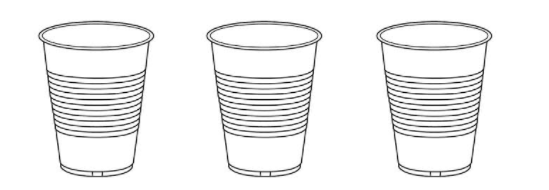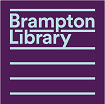Complete the challenge and share videos of your walking water on social media with @BramptonLibrary #kidsatBL!
This week’s challenge:
Learn about capillary action, colour theory and absorption with the Walking Water Challenge.
Supplies you will need:
- 3 Pieces of paper towel with dry food colouring
- 4 sheets of paper towels
- 3 Cups
- Water
- A Spoon
What is colour mixing?
- In this experiment, we will be mixing primary colours to make secondary colours.
- Primary Colours: are the three colours we can use to mix together into all kinds of other colours. They also cannot be created by mixing any other colours together. The three colours are Red, Blue and Yellow
- Secondary Colours: are the colours made when we mix together the primary colours of red, yellow and blue. Secondary colours include green, orange, purple and many more!
What is absorption?
- Absorption is how an object takes in matter or energy. We see absorption every day: Heavy curtains absorb sound energy. Coloured objects and filters absorb light energy. White light is composed of all colours of light. When white light strikes a coloured substance, some colours of light energy are absorbed. The absorbed light energy excites electrons in the atoms of the coloured substance--that is, it raises them to higher energy levels. Dry earth absorbs water. The water in a lake absorbs oxygen by dissolving it.
What is capillary action?
- A capillary is a tiny, hairlike passageway. A paper towel, for example, has millions of capillaries between its fibers. The passageways absorb water by capillary action.
- Capillary action is the tendency of liquids to move into or out of these passageways. It means that liquid has the ability to flow against gravity. This means that liquid can sometimes move upward if there is something that the liquid can adhere to. Capillary action is how trees and flowers get water.
CAPILLARY ACTION & COLOUR MIXING
Set up three clear cups, two filled to the top with water.

1. The first cup should be filled to the top with water and one piece of paper towel with food colouring (red, blue or yellow). Stir until the water is saturated with that colour (red, blue or yellow).
2. The middle cup should be empty.
3. The third cup should be filled to the top with water and one piece of paper towel with food colouring (red, blue or yellow). Stir until the water is saturated with that colour (red, blue or yellow).
4. Twist one sheet of paper towel, then place one end in the first cup and one end in the middle cup.
5. Twist another sheet of paper towel, then place one end in the middle cup and one end in the third cup.
WATCH AND OBSERVE!
Extensions:
- Repeat the experiment with a different combination of primary colours. What secondary colour did it create?
- Repeat the experiment and use different fluids (ie, oil) - would it work? What might happen? Why?
If you liked this activity, you might enjoy these free resources from our library:

Mixed! A Colourful Story by Arree Chung

Experiment with Water by Charnan Simon

Try This! Extreme: 50 Fun & Safe Experiments for the Mad Scientist in You by Karen Romano Young





 905-793-4636
905-793-4636